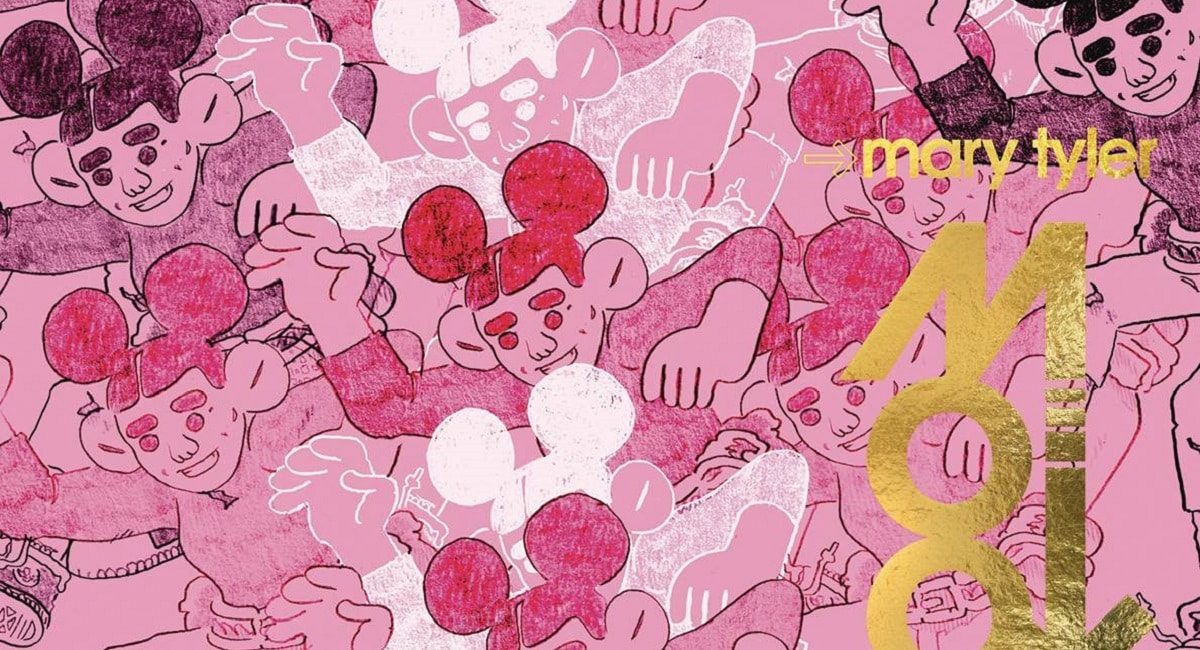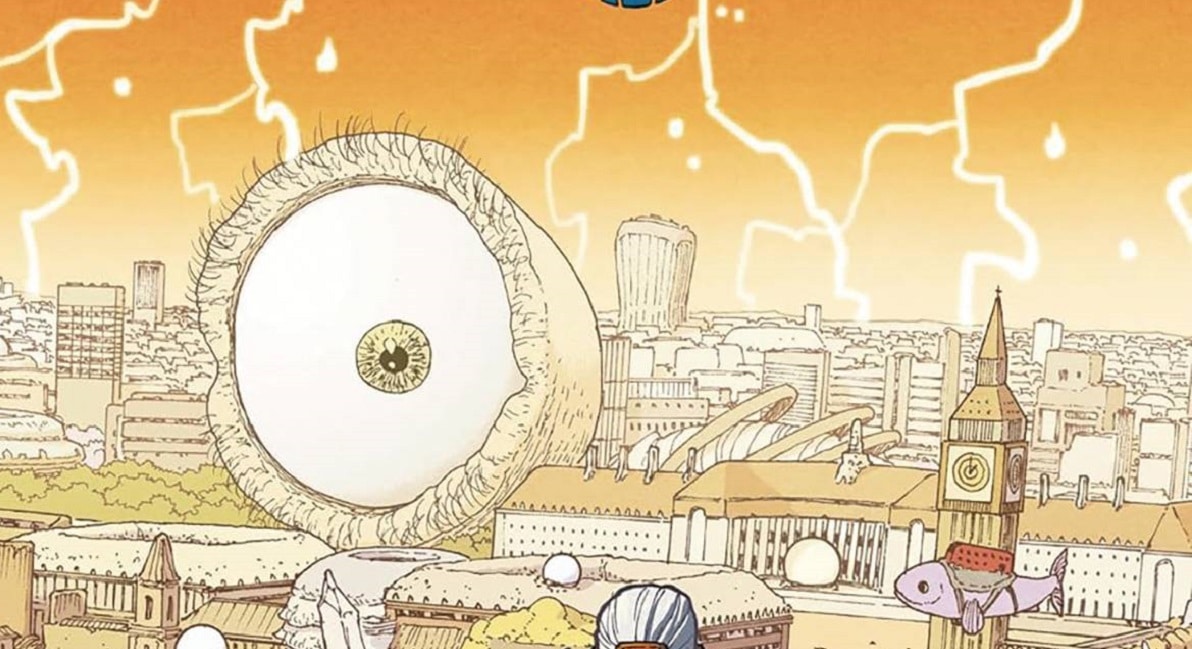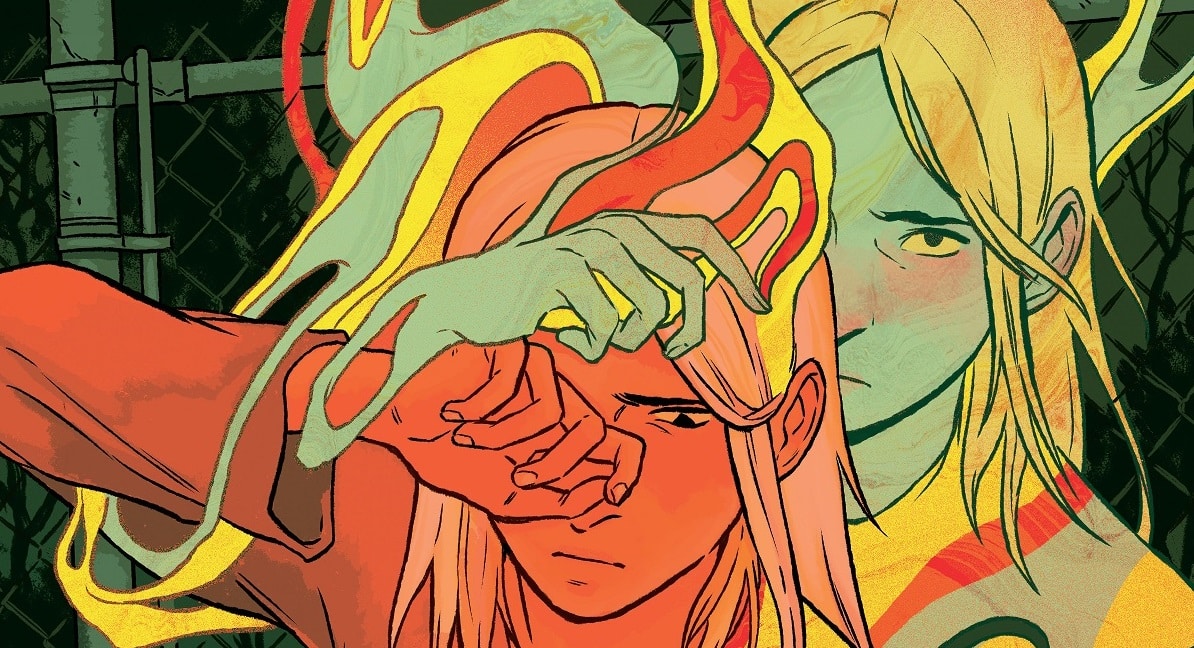MARY TYLER MOOREHAWK
Cartoonist: Dave Baker
Publisher: Top Shelf Productions
Publication Date: February 13, 2024
One of the first pieces of comics writing I did was a review of Everyone is Tulip for Comics Bookcase back in 2021. That graphic novel – by Dave Baker, Nicole Goux and Ellie Hall – was among my favorites of the year, and one I think about regularly. Three years later, I still follow that creative team in both their collaborations and independent work. All that to say, not only do I really enjoy Dave Baker’s work but I also have a personal attachment for where I found his work relative to where I was in my life. The connection between audience and author can be wholesome if properly reflected on, but also dangerous as it creates expectations and assumptions that may end up being unfair to the reality of the work being produced and discussed. Art and fandom, especially now, is a very tricky line to walk.
The balance between reality and fiction, as well as the conditions that produce a work of art and the consequences it can have on people is essentially the thesis of Dave Baker’s newest graphic novel, Mary Tyler MooreHawk. This comic is just as difficult to write about as it was to read. Rather than a simple pulp adventure like Baker’s Halloween Boy, this graphic novel cuts between a fictional narrative and a “true” document based story surrounding Dave Baker himself.
Mary Tyler MooreHawk becomes a three-part mixture of Jonny Quest, Danielewski’s House of Leaves and Philip Roth’s Operation Shylock. We open with a unique, fun, pulp adventure more in line with what an audience typically expects of Dave Baker’s work. The world is filled with unique creatures, characters that mention elaborate histories, technological jargon, and people we are not meant to know or understand. In these opening adventures, we meet our title character who embodies the smiling adventurer archetype alongside worried but capable allies. In particular, I found Cutie Boy to be among the most fun and compelling characters in the whole work. One could perhaps write a whole series just in this style, and if they did they might end up with something like Halloween Boy.
However, from there the other post-modernist influences start to become apparent. We realize we are not simply reading a pulp adventure but a commentary on the history of a specific kind of media, and the human faces that create it. Through a series of document based interviews and stories, we learn about the concept of Mary Tyler MooreHawk and the relationship “Dave Baker” has to it and its creator.
As a commentary on fandom, we see Baker here rendered into two distinct beings, the artist and the fan. We grapple with the all too familiar desire to know everything, to collect everything, and to pursue a rabbit hole of fiction only to be faced with the roadblocks of reality. At the end of the day, all fiction is made by people, by specific material conditions. How does that alter our understanding or appreciation for that work? Baker interrogates not only the fan side of this but also the artistic. How do these expectations influence the work, what parts will be erased or in conflict with the audience an artist is trying to reach?
The book design plays a major part in how this experience connects with the reader. We move from kinetic action orientated art with half a dozen things happening on every page to something resembling more like a journal article or magazine. We abruptly slow down to take stock in the history behind the adventures we’re reading but also start to wonder about the work that goes into every minor adventure in our fictional reality. Each of Mary Tyler MooreHawks adventures follows an animated series episode of the week format, complete with summaries of all the relevant characters. But as this structure is repeated over and over, it is complicated by the evolving history we learn. The characters come alive not just as devices within the story of sci-fi action but as representations of real people, as compromises from a production standpoint, as entities that go beyond the vision of one person.
Baker here is attempting a very ambitious and worthwhile project, and the book is mostly able to make that work. For better or worse, he is wearing his influences on his sleeve and that connection to other real world objects can enhance the themes he is discussing. Though they can also become a bit distracting, particularly towards the end. However, I still found myself enthralled by what was being done. A steady horror builds through the reading as you see yourself in the fictionalized Dave Baker. Every detail of how he conducts his investigation and how the story of Mary Tyler MooreHawk is laid out feels familiar for anyone who has a deep connection to a work of fiction. We learn of the exploitation we all intellectually understood was there but sometimes choose to ignore. But at the same time, we internalize the hope of the final product, that the fiction takes on a life of its own outside the conditions that made it. The comic then becomes about understanding that material reality, not erasing it for the sake of cheap thrills. If the fiction speaks to us, we owe it to ourselves to understand the people behind it and not to view them as simply names on a page.
Mary Tyler MooreHawk is a dense, fascinating work. It’s a graphic novel that will require several reads, and while it can on occasion feel too on the nose or too indebted to its influences, there is an important critique here worth considering. It stands out as an experimental and worthwhile evolution in Baker’s style, and will surely be looked back on as one of his best works.
Verdict: Buy
Read more graphic novel reviews in The Beat’s Reviews Section!








